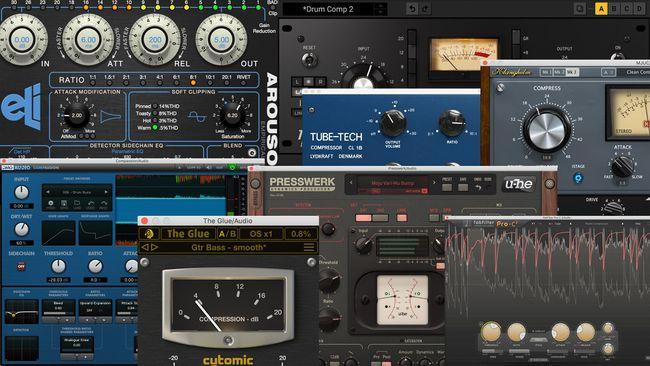A Guide to Choosing the Best Compressor VST: Features and Options

Introduction
The use of a VST (virtual studio technology) compressor is crucial in the highly vibrant sector of music production as it helps to bring out the best tracks that are well polished and have a professional sound. The choice you make while selecting the appropriate compressor VST to be used in your mix can have a great effect on its overall quality, whether you are a new or experienced producer. The objective of this guide is to highlight some important features and factors that need to be considered before deciding on the best compressor VST that suits an individual’s needs.
Understanding Compression
To begin with, let’s have a brief look at compression before we get into the characteristics of a compressor VST. In audio production, a vital technique that is often used to control the dynamic range of sound is known as compression. This makes it possible to bring up the volume of quieter sections while also tancing down louder parts to maintain an even and consistent audio output.
Key features to consider
1. Compression Modes
Some compressor VSTs have different compression modes, including peak, RMS, and opto. If you want to control sudden spikes in volume, peak compression is best, while for stable levels over time, use RMS compression. It gives a smooth and transparent sound, as it was inspired by optical compressors. This way, you will know the kind of compressor that suits your requirements once you understand these modes.
2. Attack and Release Times
When the volume changes, the compressor’s attack and release times determine how fast it responds. Quicker attack periods can bring out transients that accentuate drums and percussions, for example, while longer release times can yield a more natural-sounding compression that is transparent. The ability to set the response of the compressor towards different parts of your mix is what makes adjustable attack and release times useful.
3. Ratio and Threshold Controls
The ratio is used to determine the amount of gain that will be reduced if the input signal exceeds the threshold. The more aggressive compression is achieved by using higher ratios. However, when it comes to a threshold, it sets up the point at which compression should start taking place. On the other hand, one must understand and appreciate how ratio and threshold interact with each other for a desirable compressing effect. Seek out a VST compressor that has easy-to-use, intuitive controls for quick adjustments.
4. Sidechain Capability
With sidechain functionality, you can trigger compressions based on a separate audio source. This is very helpful in genres where a pumping effect is needed, such as electronic dance music. With a compressor VST and a powerful sidechain feature, you are given the freedom to explore creative possibilities and achieve distinct and dynamic mixes.
5. Multiband Compression
You can do some multiband compression with some VST compressors to do separate compressions of frequency bands. This is good for correcting a few tonal problems without affecting all the frequencies. Think about whether your projects could be improved by having a multiband compressor that is accurate and controlled.
Ways to Explore
1. Analog Emulation
Several compressor VSTs try to mimic the warmth and character of analog hardware. Do you like the sound of a vintage compressor? If yes, get a VST that has an analog emulation. It can add some color and personality to your digital products.
2. Visual Feedback
A compressor VST plugin with visual feedback, for example, a waveform display or gain reduction meter, can help you understand how the compressor is affecting the audio signal. Real-time visual feedback helps make decisions and refine compression settings with precision.
3. User Interface and Workflow
When considering a compressor VST, it is important to pay attention to the user interface because it defines your overall experience with it. You should think about VSTs that are created with a layout and workflow that feel comfortable to you. There are also some of these plugins have also been equipped with presets as well as easy-to-use features to make compression more straightforward and faster for you while saving your studio time.
Conclusion
In conclusion, a thorough consideration of a VST compressor's features is crucial for optimal music production. Understanding compression basics, including terms like attack times, release times, ratios, and thresholds, empowers better decision-making. Exploring additional aspects like sidechain capability, multiband compression, analog emulation, and visual feedback enhances creative capabilities. For a compressor VST that meets your needs, visit us at Audio Egghead. Achieve outstanding results and build dynamic, high-quality soundscapes for your music.
- Art
- Causes
- Crafts
- Dance
- Drinks
- Film
- Fitness
- Food
- Spiele
- Gardening
- Health
- Startseite
- Literature
- Music
- Networking
- Andere
- Party
- Religion
- Shopping
- Sports
- Theater
- Wellness
- IT, Cloud, Software and Technology


